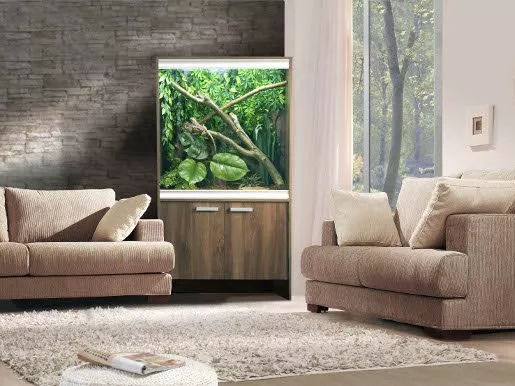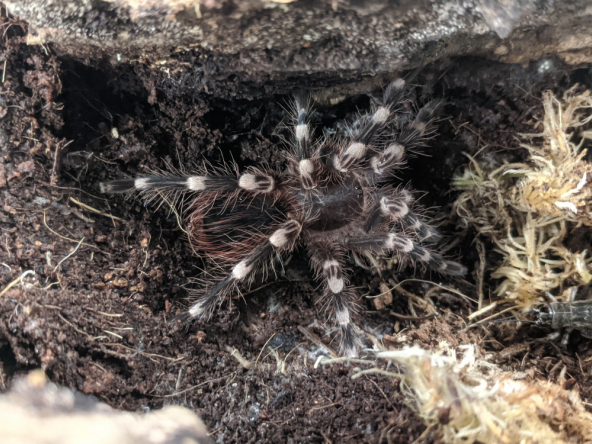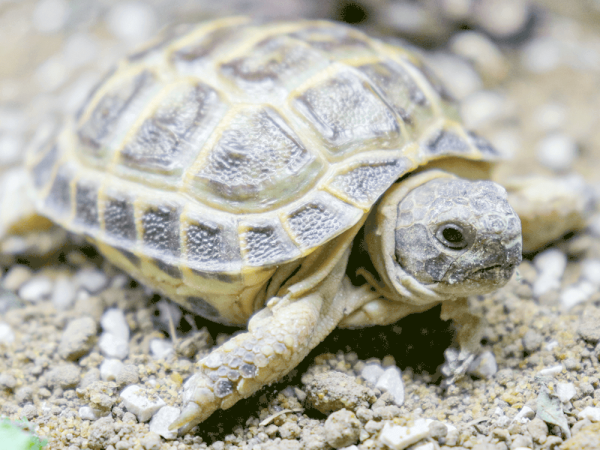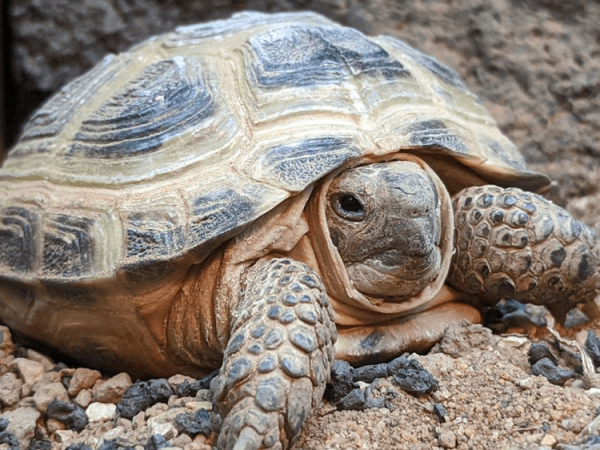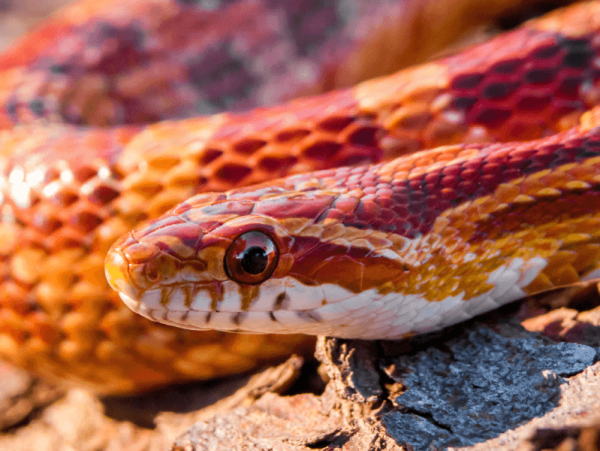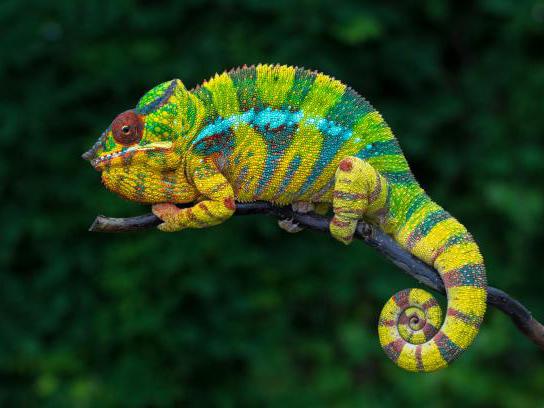How to set up a vivarium
A suitable vivarium set up is probably the most important thing to take into account when bringing a reptile, amphibian or exotic pet into your home.
It's important to recreate a reptile's natural environment as closely as possible in order to keep them happy.
Vivariums allow you to easily control factors such as heat, humidity and lighting to replicate an exotic pet's natural habitat.
It might sound fairly complex, but after doing your research you'll soon get the hang of things. Learning about the reptile's needs can be an interesting process, and creating and decorating your reptile's new home is all part of the fun.
A vivarium is a wooden structure which can include a substrate, whether loose or fitted, decor or live plants and appropriate equipment such as LED lighting, ceramic heaters and thermostats. Wood is an ideal material as it is a great source of insulation, preventing heat from escaping.
The type of equipment and the environment that you create all depends on the type of animal that you are keeping. A bearded dragon requires a different environment from a leopard gecko, for example.
Some animals, such as frogs and other amphibians, require a different enclosure entirely. Rather than keeping them in a wooden vivarium, a glass terrarium is more ideal in order to regulate factors such as heat. It's more common for glass terrariums to include live plants than a wooden vivarium. But with the right research, there's no reason why you can't grown your own plants in a vivarium.
Setting up a vivarium
To achieve the correct temperature, we recommend setting up a heat bulb at one end of the enclosure. For safety, you must ensure that your reptile is unable to touch the heat source, as this can of course lead to serious burns and injuries. You can prevent this from happening with the help of a protective heat guard.
In order to regulate the temperature, you'll need a good quality thermostat. A dimming thermostat might be used if your bulb emits light as well as heat. If you have a bulb that does not emit light, then a pulse stat is a more suitable alternative.
Don't overlook the benefits of a thermostat. It's simply not worth risking overheating your vivarium as this can harm your reptile. You will need to programme your thermostat to ensure that it maintains the correct temperature. This isn't a case of one temperature fits all, and so most thermostats are designed to adapt to a variety of bulbs and set ups.
The type of reptile that you have will determine which UVB light you will need. Leopard geckos, snakes, amphibians and arachnids do not need UVB light, but if you wish to provide lighting in order to give them a day and night cycle, then we'd recommend a UVB of 2%. Reptiles from a forest environment, such as chameleons and green iguanas need 5%. You'd be better off keeping these animals in a terrarium, which is made out of glass, rather than a vivarium. For desert reptiles such as bearded dragons, it is a necessity and as a result they requite a UVB of 10%.
It's widely recommended that you regularly change your UVB tubes every 6-8 months, as after this time UVB rays can lessen, resulting in your reptile absorbing less calcium.
Substrate
Reptiles require different vivarium substrates depending on which environment they come from. Sand is a popular choice among beardie owners due to the fact that it is an attractive substrate which looks natural. However, many now recommend that you avoid loose substrates if you are keeping a bearded dragon, as studies have shown that if the beardie consumes loose substrate such as sand it can increase their risk of impaction, a serious health issue.
There are other people who claim to have kept bearded dragons on sand for many years without any health concerns. It's important to be aware of the risks so that you can make up your own mind. If you do opt for a sandy substrate, we recommend feeding your reptile by hand, to prevent them from eating sand particles along with their meal.
Another way to prevent your bearded dragon from swallowing the substrate along with the food is by placing it in dishes rather than on the sand. If it is live food such as crickets, by hand is probably easier.
Some people choose to remove their reptile from the viv at feeding times completely. We have written a blog post about the issue, and so take a look at our impaction in bearded dragons post for more information.
Other substrate options include cage carpet, soft chip reptile bedding and sphagnam moss.
Decor
Adding decor to the vivarium can be a fun and creative process. But it's not just about how it looks, you need to ensure that everything you include is suitable for your reptile.
Most reptiles benefit from plenty of hiding places, on both the hot and the cool side of the vivarium. Hiding places are a must so that your reptile can feel comfortable and safe in their environment.
If you opt for an arboreal vivarium, which is usually taller than it is wide, it's important to include lots of places for your reptile to climb. This can include branches and plants whether real or fake. Chameleons and boas can fall into the arboreal category, but quite often
Wooden vivariums are ideal for a desert environment. And as you'd expect, desert reptiles are used to open, sandy environments, drenched in heat.
What else do I need to know?
Vivariums are relatively easy to build, but once you've put the pieces together, there are a few other things that you need to do before it is safe to house your reptile. It is vital that you don't move your pet into the vivarium straight after sealing it. Toxic fumes are produced by the sealant and until these are cured, the fumes can be harmful to your pet. We'd recommend waiting a day or two before introducing your reptile to its new home.
Your wooden vivarium requires at least one air vent per square foot - this is why Vivexotic vivariums are great for housing your reptile. Vivexotic offer some fantastic kits which are designed to ensure that dirt and insects cannot escape and therefore have air vents at the top of the vivarium rather than near the bottom.
It's also worth remembering that if you buy your reptile as a baby, it will grow over time and may nee a larger vivarium as it gets older. Therefore with most reptiles we'd recommend getting a larger vivarium to save you the costs of having to upgrade at a later date. If you're unsure as to whether or not your reptile would benefit from a smaller or larger vivarium, please give us a call on 0161 351 4700 for more info.




